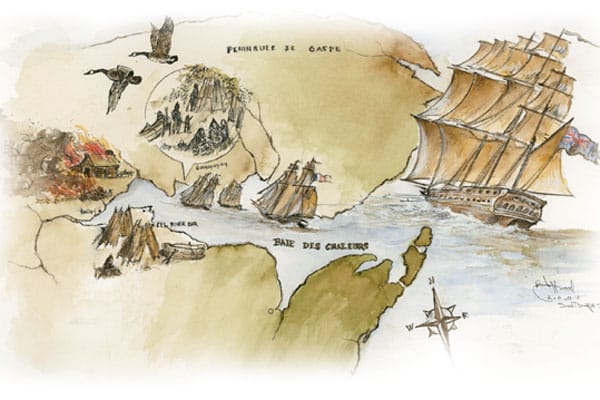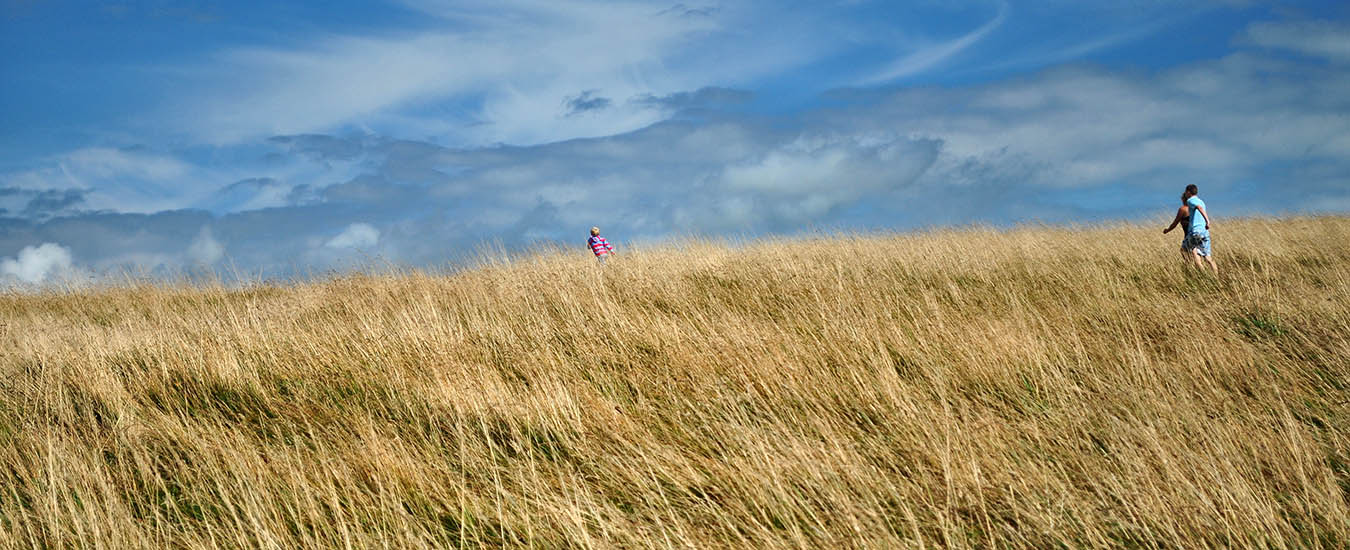A postcard-pretty coastline steeped in history has inspired generations of passionate people-and more recently, world-class accolades.
Un secret bien garde -a well-kept secret. Secrets exist for a reason, usually to protect something or somebody. New Brunswick has a secret it shares with Quebec-the Bay of Chaleur.
In 1534 Jacques Cartier, on a voyage of discovery, found what he called "the fairest land that may possibly be seen, full of goodly meadows and trees." Because the heat was so intense where he came to rest, he named it the Bay of Chaleur-a misnomer in the winter, but deadly accurate in the summer.
The Bay is the province's crown jewel-it shines with the richness of its environment and its people. It is a place of beauty, colour and peace. But it wasn't always that way.

Back in the once-upon-a-time days the British and French, traditional enemies, needed to determine who owned the continent. I've often wondered why they thought they had the right to claim it when First Nations people had been here long before! Nevertheless, the enemies ran afoul of each other in port after port, time after time, winning and losing their skirmishes. Their last naval battle was fought in New France, the territory that would eventually become Canada, 247 years ago this summer.
Many believe that the last battle here was on the Plains of Abraham-not so. It was a year later, in 1760, at the mouth of the Restigouche River in the Bay of Chaleur.
The short version of the story is that in 1758 the British captured Louisbourg, NS, and carried on to overtake Quebec City in 1759. The French in Montreal were hanging on to their territory but provisions were getting slim. If they could get more ammunition, troops and food, they believed they would be able to fend off the British for good, retaining New France.
Six ships left France loaded with troops, munitions and provisions destined to bolster the holdouts in Montreal. They didn't make it. Two ships were seized and one ran aground along the way; the remaining three escaped the pursuing British by hiding in the upper reaches of the Bay of Chaleur.
Can't you imagine the reception afforded these ships when they first sailed into the Restigouche River in May of 1760! First Nations people were preparing their gardens and fattening up on the abundant Atlantic salmon. They were good friends with the French. About 1,500 Acadians exiled from their homeland in the south of the province because they refused to swear allegiance to the British Crown had been living in a settlement on the north side of the Bay. When the French ships came sailing in the Mi'kmaq and their Acadian kin greeted them warmly. I picture people lining the shores on both sides, praying, crying and singing. What a welcome!
But lo! The parties were short lived. British ships followed closely behind! In July after a short battle the French scuttled their ships to prevent the English from getting hold of the provisions aboard. The British razed the village of about 200 homes inhabited by the Acadians who scattered to heaven only knows where. History is quiet as to the disposition of the settlers, though undoubtedly they found refuge in various spots along both coasts. They may remain there yet, still keeping the secret.
Picture it 40 years later, around 1800-guns were quiet, the countryside was conducive to settlement, salmon and game were plentiful, the Mi'kmaq were welcoming. Acadians began to feel secure in their surroundings again. The Scottish Clearances and Britain's Industrial Revolution led to a migration into the region. Settlers knew they had to co-operate to survive the hot summers, frigid winters and economic ups and downs.
Time passes …plus ça change, plus c'est la meme chose. Two centuries later it is still a co-operative, peaceful place. French, English and Mi'kmaq live side-by-each, sometimes growling at each other, sometimes sharing their largesse. In spite of the changes, that which makes this place great remains the same. All people live in the shadow of one of the most beautiful bays of the world.
In the mid-1990s a group of Europeans with vision established the prestigious Most Beautiful Bays in the World Club. There are 25 member countries; more than 50 people from member and other countries attend the regular meetings-and there is no language common to all! The gatherings must be a cacophony of musical sounds!
So far 32 bays have met the criteria for designation as world-class beautiful. What makes them so special? The people, natural beauty and economic opportunity blended with the environment. When the Bay of Chaleur was proposed the club examined the preservation of natural heritage, the cultural contribution to the region, the tourism management and environmental protection, and the economic attributes. The bay passed with flying colours.
In her 1919 book Treasure Trove in Gaspé, Margaret G. MacWhirter wrote, "In Gaspé and the counties surrounding the Baie des Chaleurs grew up a brave, hardy race, fearless alike of the toil and dangers of the sea and forest, industrious, hospitable to the core, cherishing the religion and traditions of their fathers." This is still the makeup of the people here.
News of our bay didn't happen by accident-it grew out of the vision of three First Nations communities on its shores. Eel River Bar First Nation in New Brunswick, and Listuguj and Gesgapegiag on the Gaspé coast are home to Mi'kmaq descendants of the region's original residents. Together they took the bay's nomination to the 2003 meeting of the club in France; the designation became official the following year.
Since then word of the region has spread, and visitors from countries throughout the world are beginning to trickle in. A one-hour film of the Bay of Chaleur and its people is in the process of being shown worldwide-keep tuned to find out when it will air on television here!
In October 2008 the Most Beautiful Bays in the World Club will be meeting in and around the Bay of Chaleur. The secret might be out! A thick, 15-section book accompanies the invitation to attend the Congrès Mondial, or World Congress. The opening paragraph of one section says it all: The tranquil inlets and rugged, rocky points of Bay Chaleur summon you to explore richness. Experience the crispness of morning as the tides recede, immerse in our distinct cultures, ride the waves of recreation, and sample local, fresh-caught seafood. This one-of-a-kind experience with its spectacular scenery, unparalleled culture, and history creates an exceptional backdrop for the 2008 World Congress of the Most Beautiful Bays in the World Club. Bay Chaleur calls you. Experience it.
I met with three of the Congrès organizers: Gilles Soucy, Gordon Labillois and Tim Dedam. They describe themselves as the old, medium and young bulls respectively and, together with their communities, they will ensure the region is protected in the future, the ethnic groups working together on the development. They are passionate about our bay. They are First Nations leaders with vision. They describe being here as "stepping out of the postcard"-that postcard being the rolling hills, rustic farms and family settlements. They celebrate the age of wood, wind and water, and look together toward the era of prosperity with the protection of the bay central to development.
I applaud Gilles, Gordon and Tim and all others involved in looking after the beautiful Bay of Chaleur. It is my home.
